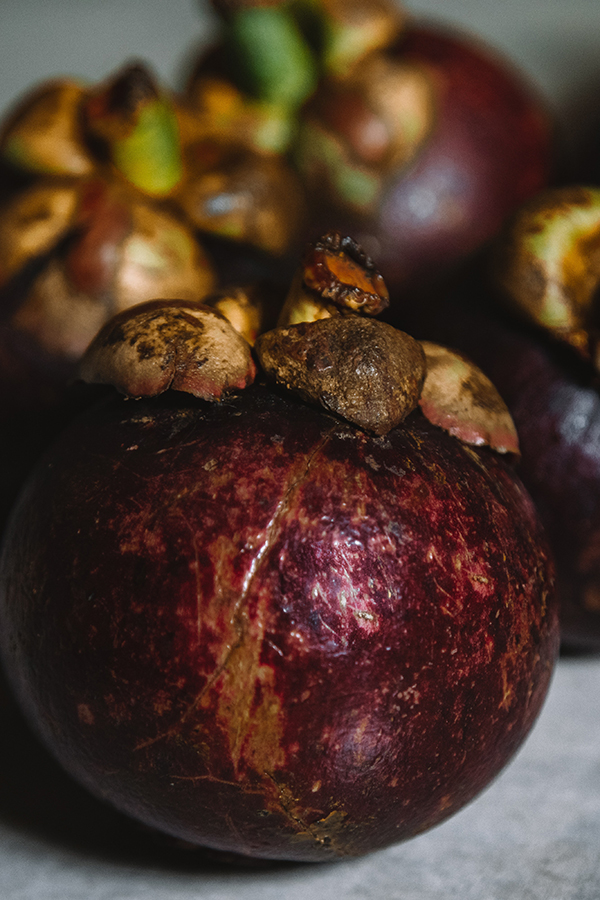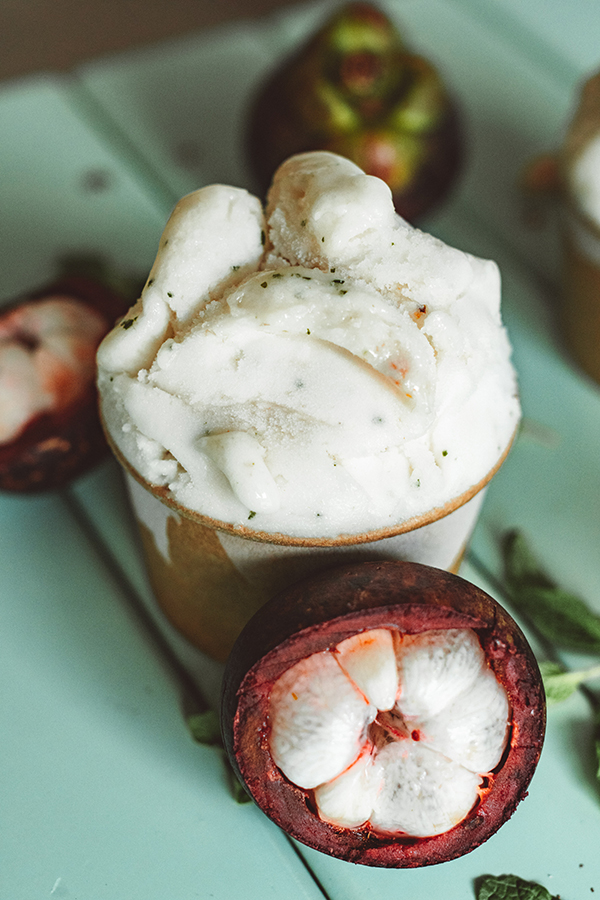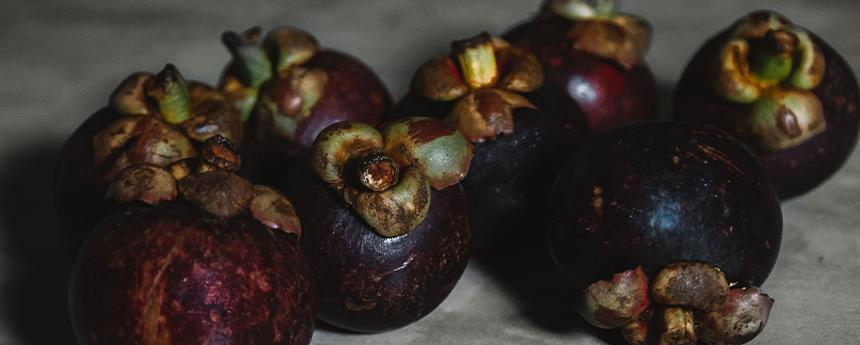- 2023-01-11
mangosteen cultivation
Cultivation technique
Garden selection
Mang Ji persimmon is an economical perennial tree. Like other fruit trees, it takes several years to benefit from planting, and once planted, the natural environment of the garden will affect the growth and yield of the fruit trees for decades. Therefore, the selection of the garden must be careful, and comprehensive consideration should be given to the topographical features, soil environmental conditions and climatic conditions suitable for the growth of mangosteen.
Topographic condition
Mang Ji Persimmon garden should be planted on the hillside, gentle slope and flat land with good natural barrier and slope less than 20°, and the garden should be concentrated and contiguous to facilitate management. The garden soil layer is deep, the soil is fertile, the soil structure is good, the pH value is between 5-6, the water table is below 0.5 meters. The garden should be convenient for drainage and irrigation, and it is best to have a stable water source for irrigation.
Soil condition
Mang Ji Persimmon is suitable for growing on various types of soil, but not suitable for calcareous soil, sandy alluvial soil and low humus sandy soil. In the tropics, breathable, deep, well-drained, slightly acidic, organic-rich clay loam and loam are best for mangosteen growth.

Construction of facilities in the park
Including road, compost pool, waterlogged room and control room. Roads include main roads and operating roads. The main road is generally 3 meters wide, the main road can drive cars or large tractors, widened to 10 meters in the appropriate position to meet cars; In order to facilitate the daily operation of the community, branch roads (1.2 meters wide) are set from the main road to each community. The main roads and operating roads in the park shall form a road network. The main road is built into a 20cm thick cement pouring road, and the working road is built into cobblestone cement pavement. The manure tanks and compost pits should be located by the roadside of each district for the delivery of manure. Generally, one manure tank or compost pits should be set up in the mountain bamboo garden of 0.7-1hm², and 25-30 tons of manure can be stored for mangosteen's one time manure application. Management rooms, including warehouses, packing rooms and farm tools rooms, should be set up in accordance with the principle of easy management.
Drainage and irrigation
Irrigation system
In order to ensure the water needed for the growth of mangosteen, it is necessary to make use of irrigation supporting projects such as river spring, self-drawn well, Shantang reservoir and water diversion according to local conditions, and build a reservoir at the height of the orchard for water storage in dry season or self-pressure sprinkler irrigation of the orchard. The size of the reservoir should be built according to the water requirement of each fruit tree.
Drainage system
The southern region has high annual rainfall, frequent typhoons in summer and autumn, frequent severe convective rain, and high rainfall intensity. Therefore, orchard planning to do well in advance of the drainage and soil conservation system Settings.
Flood blocking trench
Orchard above the mountain, heavy rain accumulated a lot of rain down, easy to cause erosion. It is advisable to set a flood blocking ditch around the mountain above the periphery of the garden to cut off the runoff on the top of the mountain and prevent the mountain flood from rushing into the orchard. It can also be used as an irrigation canal around the mountain to store water. The size and depth of the ring mountain gully depends on the water collection area above, the general depth and width of each 6era. Mountain gullies should be connected with mountain ponds to collect excess water for irrigation.
drain
Orchard should have longitudinal drainage ditch and lateral ditch, remove garden water. Try to use natural lowlands as longitudinal drains, or set up longitudinal drains next to field roads, about 20-30 cm deep and wide. The horizontal drainage ditch is located in the inner ditch of the terrace, and each step is separated by 2 plants around the mountain to do a ridge of soil, to eliminate the excess water and rainwater in the steps, to prevent erosion and prolong the orchard wetting time.
Set up a windward forest belt
In order to reduce the harm of typhoon, reduce the wind speed and improve the humidity of the garden, the protective forest belt should be built in the park. The type of shelterbelt is generally selected as ventilated forest belt.

colonization
Hole opening and base fertilizer application
The planting hole should be dug 1 month in advance, and the size of the planting hole is generally 60 cm x 60 cm x 60 cm. The top soil and bottom soil are placed separately. Each planting hole was treated with 15kg of decomposed organic fertilizer and 0.5 kg of calcium magnesium phosphate fertilizer. When applying base fertilizer, topsoil is first filled into the hole, and then organic fertilizer, calcium magnesium phosphate fertilizer and bottom hole soil are mixed evenly to form fertilizer for reserve. The planting time is generally from May to November, and it is better in the afternoon on cloudy days to avoid sunburn on the young plants of mangosteen.
Seedling colonization
Choose to grow seedlings, or transplant seedlings can be transplanted. Plant seedlings before removing insect branches and leaves and residual leaves, and then cut off some excessive leaves, to avoid large evaporation, excessive water loss. When planting, first fill the mixed soil into the hole to 40 cm, and then remove the seedling nutrition bag, into the hole, seedling support stick do not have to pull out, with the stick planted seedlings, play the role of windproof. Then fill the backfill soil, with feet after the foot of the water. Mangosteen planting plant row spacing specification is generally 4 meters ×6 meters, planting density is about 28 plants per mu. Garden density can be reduced to 22 plants/mu in flat terrain and fertile soil.
shade
The growth of mangosteen seedlings needs weak light conditions, otherwise it is easy to sunburn the branches and leaves, so the seedlings should be effectively shaded. Pile driving around the mangosteen, using wooden sticks, bamboo poles or PVC pipes as support materials, and then fixed on the square bracket with sunshade net of 90% light transmittance (shade degree), build a square sunshade shed to block the sun.
Root zone covering
The survival rate of mangosteen seedlings can be improved by covering the root zone after transplanting. It can be used to cover the root zone with internal fermanns, which can not only effectively keep the soil moist in the root zone, but also increase the soil organic matter in the root zone and inhibit the growth of weeds. Cover is generally maintained from the trunk outward to 30cm inside the drip line of the crown. Root zone mulching is practical and effective to ensure the healthy growth of mangosteen.
Fertilizer and water management
Fertilizer and water management in the first year after transplanting young trees in the first year are still in the dry season and need to apply urea water fertilizer once, which can be combined with water leaching. The dosage of 100ml per plant, the concentration of 2%, promote the growth of mangosteen seedlings. At the beginning of the rainy season, organic fertilizer plus calcium magnesium phosphate fertilizer was applied once. Each tree uses about 10 kilograms of organic fertilizer, mixed with 0.25kg of calcium magnesium phosphate fertilizer. Make holes on both sides of the plant and spread. The topsoil is first filled into the root distribution layer, and the subsoil is mixed with organic fertilizer and then pressed into the middle and surface layer. Fertilize 2-4 times during the rainy season. Three compound fertilizer with a ratio of nitrogen, phosphorus and potassium of 15:15:15 is ditched on both sides of the young trees, and the east and south sides are fertilized in turn. The amount of compound fertilizer for each young tree is 0.2 kg, and the soil is covered in time after fertilization.
Fertilization management in the second year after colonization The regularity of fertilization and the type of fertilizer in the second year are the same as in the first year. The difference is that the amount of fertilizer applied has changed. In dry season, 2% water fertilizer was dissolved with urea and applied twice, 100 ml per tree each time. At the beginning of the rainy season, the amount of organic fertilizer is 10 kg, the amount of calcium magnesium phosphate fertilizer is 0.25 kg, and the amount of nitrogen, phosphorus and potassium compound fertilizer is increased to 0.25 kg.
Fertilization Management in the third year after transplanting In the third year, during the dry season, the amount of nitrogen fertilizer was increased to apply 2% urea twice per tree, 150 ml each time, for a total of 300 ml. At the beginning of the rainy season, the amount of organic fertilizer is 15 kg, and the amount of calcium magnesium phosphate fertilizer is 0.4 kg. During the rainy season, the amount of nitrogen, phosphorus and potassium fertilizer increased to 0.3 kg.
The fertilization management for 4-6 years after colonization is mainly based on the application of organic fertilizer and Norwegian terene compound fertilizer. Adequate and reasonable fertilizer supply will help mangosteen enter the fruiting stage as soon as possible. At the beginning of the rainy season, combined with soil modification, each tree was applied with 15 kg of organic fertilizer and 0.2 kg of calcium magnesium phosphate fertilizer. During the rainy season from May to September, shallow ditches were opened for spreading. A three-way compound fertilizer with a ratio of nitrogen, phosphorus and potassium of 15:15:15 was applied three times. Each young tree should be fertilized at a time of 0.1 kg. Before and after the end of the rainy season, in November and December, the ditch method is used again, and the three compound fertilizer is applied once, and the plant is applied about 0.2 kg.




















